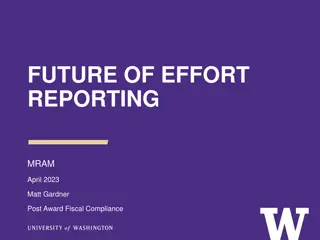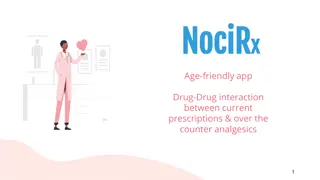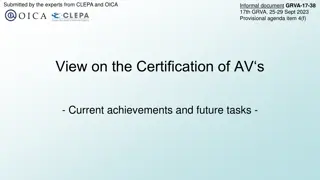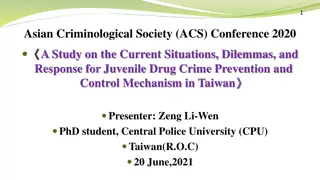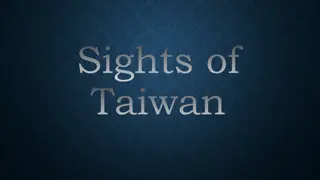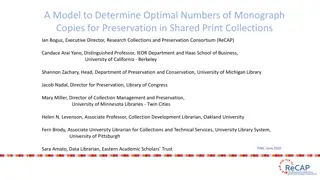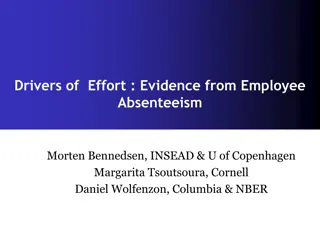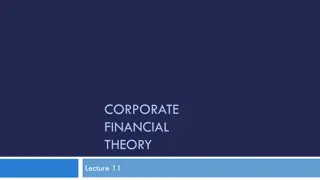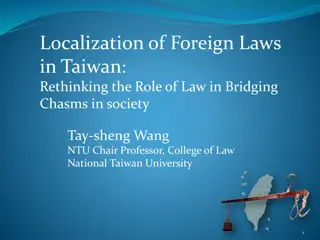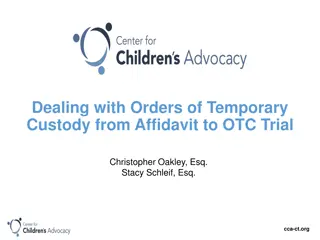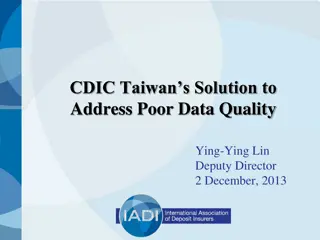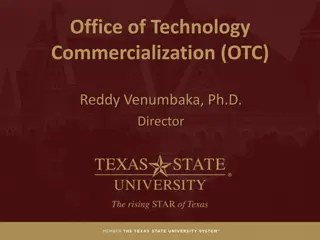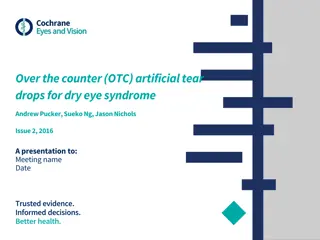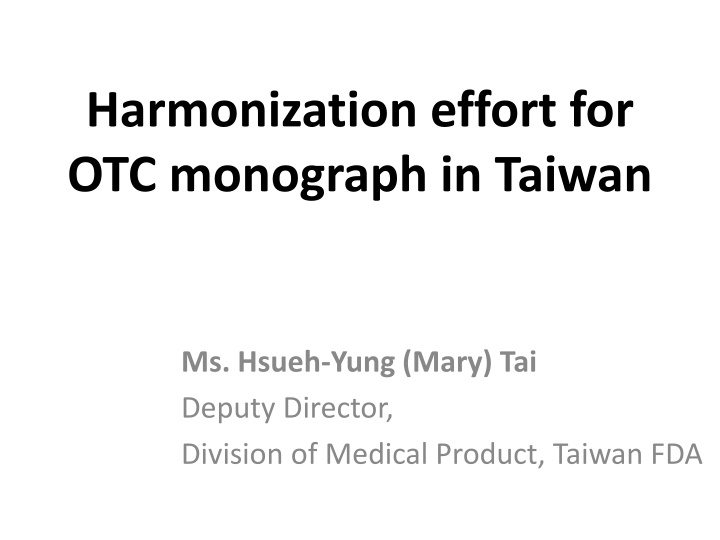
Harmonization Effort for OTC Monograph in Taiwan by Ms. Hsueh-Yung (Mary) Tai
Explore the harmonization efforts for Over-The-Counter (OTC) monographs in Taiwan led by Ms. Hsueh-Yung (Mary) Tai, Deputy Director of the Division of Medical Product at Taiwan FDA. Learn about OTC drug registration, future directions, distribution of pharmaceutical licenses, regulations for different drug categories, and the differences between prescription and non-prescription drugs.
Download Presentation

Please find below an Image/Link to download the presentation.
The content on the website is provided AS IS for your information and personal use only. It may not be sold, licensed, or shared on other websites without obtaining consent from the author. If you encounter any issues during the download, it is possible that the publisher has removed the file from their server.
You are allowed to download the files provided on this website for personal or commercial use, subject to the condition that they are used lawfully. All files are the property of their respective owners.
The content on the website is provided AS IS for your information and personal use only. It may not be sold, licensed, or shared on other websites without obtaining consent from the author.
E N D
Presentation Transcript
Harmonization effort for OTC monograph in Taiwan Ms. Hsueh-Yung (Mary) Tai Deputy Director, Division of Medical Product, Taiwan FDA
Outline Background OTC drug registration OTC monographs Future directions 2
Outline Background OTC drug registration OTC monographs Future directions 3
Distribution of Pharmaceutical Licenses Prescription Drug 61.8% 0.6% General Sale Drug 37.6% Pharmacy Drug
Regulations for different drug categories Prescription Drugs General Sale Drug Pharmacy Drugs License required v v v Distribution Hospital/Clinic v v v Pharmacy v v v General distribution x x v sold on the Internet x x v Advertisement Pre-approval v v v Mass media X v v 5
Differences between Non-prescription vs Prescription Drugs Non-Prescription Drugs To relieve symptom, prevent life-style diseases and improve/maintain health Mostly combination active ingredient products Physicians and pharmacists play consulting roles Packaged with varieties and in Layman language Prescription Drugs. To treat disease Prescribed by physicians Mostly single active ingredient products Mostly single ingredient preparations Packaged in professional language www.themegallery.com
Outline Background OTC drug registration OTC monographs Future directions 7
Review Process in OTC Drug Registration Evaluated by similar standards as generics Reference drug is not required Labeling has to follow directions in monographs YES Validation for OTC monographs YES NO Belong to any of the 10 categories in OTC monographs? Evaluated by identical standards as generics Reference drug is required Indications has to be the same as registered products Identical to any registered drug in the aspects of ingredients, dosage form, indication and usage, i.e. Generics YES NO NO YES Provide complete dossier for new drug registration Send to expert committee when necessary New Drugs 8
Dossier Requirement OTC Monograph Drug Application Evaluation NDA ANDA Not required Required Complied with Monograph Reference drug Pharm / Tox PK/PD/BA/BE Clinical trials Bioequivalence (BE) as a surrogate to clinical trial Bioequivalence (BE) requirement may be needed in special cases Safety Efficacy Chemistry, Manufacturing and Controls(CMC) PIC/s GMP GLP, GCP Quality Labeling(direction of use ) Labeling 9
OTC Registration Process Company application Meet OTC monograph Doesn t meet OTC monograph Received by TFDA Group of OTC Evaluation at Center for Drug Evaluation integrated Medicinal Products Review Office (iMPRO) Technical Department Administration Department P/T MD CMC PK/PD BE issues High risk Assessment Report PIC/S GMP Consult experts Final Decision Made by TFDA Assessment Report OTC Committee Approve Reject 10
Outline Background OTC drug registration OTC monographs Future directions 11
Comparisons for OTC Monographs Taiwan Japan USA Australia OTC monographs with 10 categories OTC monographs with 15 categories for pharmacy-only drugs and 11 categories for general-sale drugs Code of Federal Regulation Title 21 7 categories OTC Medicine Monograph 14 categories Category Evaluated by TFDA, with similar standards as generics Evaluated by local agencies Registration is not required, but OTC drugs will be inspected after marketing Evaluated by federal agency, with similar standards as generics Evaluation Classification By therapeutic classes By therapeutic classes By therapeutic classes, a few based on specific ingredients By therapeutic classes Mostly combination active ingredient products. Single active ingredient products for specific categories. Mostly combination active ingredient products with complicated formulations Combination or Single active ingredient products are decided based on categories. Formulations are relatively simple. Depend on individual ingredient Formulation 12
OTC Monographs OTC monographs was prepared with assistance from related associations since 1994. OTC monographs with 10 categories was published in 4/12/1994. Scope Contra- indications Active Ingredient Update annually for each categories in the OTC monographs since 2000. Monograph Dosage Form Warnings Taking OTC monographs from Japan as its skeleton and the A10 countries as its content, Taiwan OTC monographs collect ingredients that are mostly marketed in Taiwan. Use & Dose Indications 13 A10 :Germany, US, UK, France, Japan, Switzerland, Canada, Australia, Belgium, and Sweden
Update for OTC monographs Discussed in Expert Committee Information Collection Announce Draft Set up goals Workshops Publish Drafting Market demand and recommendations from OTC Committee References Current OTC monographs and registered drugs OTC monographs, Japan Code of Federal Regulation, USA OTC Directory, UK Regulation in labeling and components, Health Canada Therapeutic Goods Administration (TGA) regulations Association of the European Self-Medication Industry (AESGP) website Other official formulary (Non-prescription Drugs) 14
Update for OTC monographs Discussed in Expert Committee Information Collection Announce Draft Set up goals Workshops Publish Drafting TFDA Task force Collect information from countries and stakeholder Assign Project Assessed by evaluation criteria Announce final evaluation results Establish the package inserts for candidate Brings up to OTC Review Committee Submit candidates and rule to TFDA *Task force (Industry+ Regulators+ Pharmacist association) 15
OTC Monographs Laxative Medicines Antitussive and Expectorants Anti-vertigo Medicines Antipyretic Analgesics Cold Remedies Anti-allergy Medicines Gastro- intestinal Medicines Anti-worming Medicines Ophthalmic Medicines Dermatological Medicines 16
Continue efforts in OTC Product registration Switch application: Requires education material for community pharmacists Proper OTC pack size (upper limit) Good labeling practice (OTC)
Continue efforts in pharmaceutical care Strengthen pharmacist consultation for the public Continue efforts in GPP Public education
Monograph for Antipyretic Analgesics The scope of preparations subject to these standards covers oral medicines anus suppositories intended to alleviate pain or fever.
Active ingredient listed in the Approval Standard Classification Active Ingredient Maximum single dose(mg) Maximum daily dose(mg) Group I Group II Group I Group II Column A 1 Acetaminophen 325 1000 (500) 1600 4000 2 Aspirin 500 1000 (500) 1600 4000 3 Ethenzamide 500 - 1500 - 4 Salicylamide 325 - 1600 - Column B 1 Caffeine 120 300 2 Caffeine Anhydrous 120 300
Active ingredient listed in the Approval Standard Classification Active Ingredient Vitamin B2;its derivatives, and their salts Maximum daily dose(mg) 1 Column C 1.8-30 2 Vitamin B2;its derivatives, and their salts Vitamin C, its derivatives, and their salts 2.25-10 3 82.5-500 Classification Active Ingredient Maximum daily dose(g) Extract Powder Column D Glycyrrhizae radix 5 1.5 Cinnamomi cortex 5 1 Zingiberis rhizoma 3 1 Paeoniae radix 5 2
Active Ingredients Group I preparation In Column A, at least one active ingredient, and do not contain up to three active ingredients. Group II preparation In Column A1 or A2, at least one active ingredient and do not contain up to two active ingredients. Other rules of combination and quantity are described for each classifications.
Dosage Forms The dosage forms should be tablets, film-coated tablet, sugar-coated tablet, capsules, soft capsules, oral solution, suspension, syrups, powders and granules. If medicines contain the salicylate ingredient could be manufactured to enteric dosage form. Single ingredient medicines of Acetaminophen, Aspirin or Salicylamide could be manufactured to suppository. Indications Relief fever and pain (headache, toothache, sore throat, joint pain, muscular pain, menstrual pain, neuralgia).
Directions Group I preparation take medication if needed or with fever , and if symptoms are continuous, take the medicine every 4 to 6 hours, do not take more than 4 times in 24 hours. Group II preparation take medication if needed or with fever , and if symptoms are continuous , take ~ tablets (units) with 4-6 interval period between dose, not more than times in 24 hours. Use the minimum of dosage at the beginning. Age group Coefficient 12 years old and over 1 6- under 12 years old 1/2 3- under 6 years old 1/4 Under 3 years old Diagnosis and treatment by a physician
Healthcare Products

